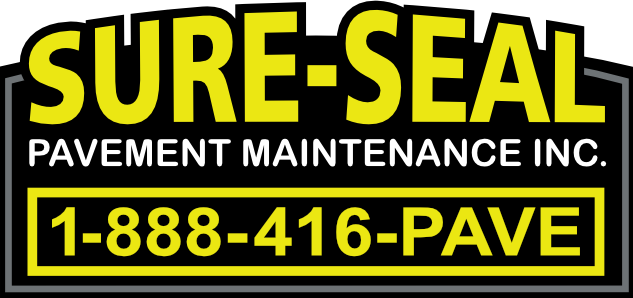 Pothole repair in Toronto should be something most local businesses are aware of, especially considering the cold and wet winters we often get. While potholes may seem like they appear out of nowhere, they are actually the result of long, sustained damage. The cold can cause cracks to form in pavement while water that seeps in can quickly degrade the ground beneath, resulting in potholes.
Pothole repair in Toronto should be something most local businesses are aware of, especially considering the cold and wet winters we often get. While potholes may seem like they appear out of nowhere, they are actually the result of long, sustained damage. The cold can cause cracks to form in pavement while water that seeps in can quickly degrade the ground beneath, resulting in potholes.
It is not uncommon for potholes to occur on properties that haven’t been regularly maintained. However, when they do occur, many property owners are confused as to how they should fix the damage. There are actually different pothole repair techniques that can be used.
Different Methods of Pothole Repair
There are essentially two different pothole repair methods that can be used, although sometimes people can get confused about these different types.
Once a pothole occurs, it needs to be patched. Patching basically means that the pothole has to be filled in. While this is the only repair option that can fix a pothole, there are a couple different types of patching that can be used—cold patch asphalt repairs and hot mix asphalt repairs—and each has its own benefits.
Cold Patch vs. Hot Mix Asphalt Repair
These two different types of patching each have their own benefits. With cold patch asphalt repair, potholes are quickly filled in with already-mixed asphalt. Property owners simply use already-mixed asphalt and pour it into a pothole or wide crack and pack the asphalt in as tightly as possible. This method requires very little work and is a simple process. Property owners can often do cold patches by themselves. This type of repair is also less costly in the short term.
However, cold patch repairs tend to not be very effective. Cold patch repairs are “quick fixes” and do not properly fill or seal a pothole, which means that damage to the asphalt will continue to occur. Eventually, areas repaired with a cold patch will end up forming into potholes again.
With hot mix asphalt repair, the pavement around a pothole is excavated. Then, it is filled in and sealed with hot asphalt. This type of repair addresses the underlying problems that caused the pothole and prevents more damage from occurring (as opposed to a cold patch is more of a surface-level fix). While hot mix repairs have a higher upfront cost, they end up costing much less in the long run as no further repairs will be needed.
[button size=”medium” style=”primary single-post-btn skew-button” text=”Get a Free Consultation Now!” link=”Contact Us” target=””]
How to Choose
When choosing between cold mix and hot mix, it seems like the obvious choice would be to go with the more effective, more cost-efficient hot mix. Why would anyone use a cold patch mix if it’s just going to break down again?
The truth is that you should be using hot mix to effectively repair your potholes. However, cold patches are usually used as a temporary fix until you can have the pothole repaired properly. Hot mix repairs are a much bigger process and may take time to perform. In the meantime, you may want to fill in a pothole for safety purposes, to avoid liability, or to allow your driveway or lot to be used.
So, most of the time, you don’t have to choose between the two methods. Cold patch repairs are a cheap, temporary solution that you can use while you schedule a company to perform a hot mix repair.
Pothole Repair Professionals
While cold patches can often be done by anyone, a proper hot mix repair needs to be done by a trained pavement repair specialist or company. It is a difficult process that requires machinery and expertise to be performed effectively. For more information on what to do when you need pothole repair, please see our previous blog.
As the leading pavement maintenance contractor in the GTA, Sure-Seal Pavement Maintenance Inc. specializes in catch basin repairs, rebuilding, and repaving. We offer an industry-leading seven-year structural warranty. Contact us today for more information on how we can perform catch basin repair for your driveway or parking lot.

![Sureseal Pavement [Staging] -](https://www.suresealpavement.com/wp-content/uploads/2024/12/1-300x141.png)